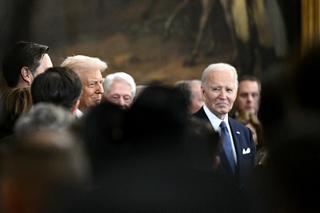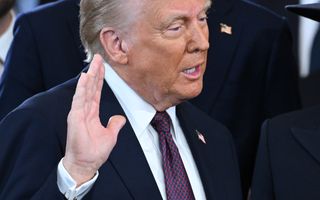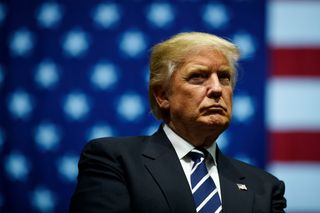“Sunlight is pouring over the entire world, and America has the chance to seize this opportunity like never before.”
Donald Trump’s inaugural address was pulsating with confidence and packed full of promises to the American people. The 47th US president has reasons to feel self-assured.
Just four years ago, he was an embattled incumbent, departing Washington with the lowest approval rating of any post-WWII US president and under the shadow of the violent January 6 Capitol insurrection.

Today, Trump’s popularity sits at an all-time high. He returns to the Oval Office as the first Republican to win the popular vote in more than two decades and just the second president in American history to reclaim the White House for a nonconsecutive term.
As testament to his extraordinary comeback, some of the most virulent critics of the early days in Trump’s first administration are primed to occupy key positions in his second – from Vice President J.D. Vance to his pick for ambassador to the United Nations, Elise Stefanik.
And all signs indicate that the 47th president is ready to hit the ground running. Trump vowed to a rally of supporters on the inauguration’s eve that he is bracing to “act with historic speed and strength and fix every single crisis facing our country”. His top advisers have reportedly prepared a “blizzard” of more than 100 executive orders, teeing the president up for a busy first day spent undoing Biden-era actions and ticking off dozens of campaign policy priorities, ranging from energy to the federal workforce.
With the formal handover of power complete, the real test begins. And in many ways, Trump’s toughest battles lie ahead.
Trump’s promises are characteristically bold and far-reaching. Take immigration and the US-Mexico border: according to the incoming president, “by the time the sun sets tomorrow evening, the invasion of our borders will have come to a halt”.
Whether Trump’s barrage of executive orders survive likely litigation challenges remains to be seen. But inauguration day is the unique moment when the US president transitions from the contest of an election year to sketch a path forward, spelling out their vision for governing the country over the next four years.
Now, with the formal handover of power complete, the real test begins. And in many ways, Trump’s toughest battles lie ahead.
This isn’t the first time Trump has made sweeping promises to the American people. In 2017, he entered the White House with Republican control of the House and Senate, and similar ambitions to overhaul healthcare, immigration and the federal bureaucracy.
But that wasn’t enough to guarantee smooth sailing for Trump’s agenda in both chambers of Congress. During his four years in office, the president managed to push only one significant piece of legislation across the finish line: his signature tax bill.
Trump tried and failed to repeal the Affordable Care Act, with his attempts at fulfilling a key 2016 election promise scuttled by moderate Republican senators such as Susan Collins and Lisa Murkowski – who could be set to play a similar obstructionist role in the months ahead.
This time, however, the House Republican majority is much narrower, while Trump’s to-do list has ballooned.
Republicans now hold the smallest House majority since the Great Depression. Vacancies in three Republican seats will cut into this already razor-thin margin until special elections are held later this year. Against this backdrop, a single defection or absence would eliminate the Republican majority and derail Trump’s legislative agenda.
This tight vote count will demand near-perfect unity among House Republicans – a feat that has proved elusive in recent years. Only two weeks ago, Mike Johnson just held onto the House speakership, in a tumultuous vote tally that may be a hint of the headaches ahead for Trump, as he navigates a slender majority and polarised House Republican conference.
As for support in the Senate, the upcoming committee votes on some of Trump’s more controversial cabinet picks will offer the first real test of the president’s sway over Senate Republicans.
Still, even if Senate Republicans unify around Trump’s agenda, the most ambitious of his legislative ideas will be tempered by a majority of only 53 seats. Republicans will need to reach across the aisle and do deals with Democrats if they wish to meet the 60-vote filibuster-proof threshold required to get legislation through the Senate and onto Trump’s desk.
Optimism doesn’t equal support
Negative feelings about the economy propelled Trump to the White House, eclipsing all other voter concerns. And as he takes office, Americans are feeling more optimistic about their personal financial situations than they have been in at least 15 years.
However, this does not necessarily translate to strong support for Trump’s policy agenda.
Though Trump has claimed an “unprecedented and powerful mandate”, in reality, he won the popular vote by the smallest margin since the historic 2000 presidential election.
The latest NPR/PBS News/Marist poll shows that Americans are more likely to say that tariffs – central to Trump’s policy philosophy – would hurt (48 per cent) rather than help (31 per cent) the US economy.
When it comes to his other priorities, Trump’s agenda gets mixed reviews. The vast majority of Americans (62 per cent) do not support Trump pardoning the people convicted of attacking the US Capitol on January 6, 2021 – who the president described as “hostages” in his pre-inauguration rally. Americans are similarly split on whether they support the mass deportation of undocumented immigrants – another key pillar of Trump’s bid for re-election.
Cracks in his public support could begin to show as the Trump administration’s policies unfold and if Americans don’t feel their economic situations materially improve under Trump’s leadership.
Above all, Trump has learnt the lessons of his previous term and knows that he has only a short window of time to act. In just two years, the midterm elections could leave Republicans losing control of Congress, and focus will shift to preparing for the next presidential match-up in 2028. His first 100 days will be animated by this sense of urgency.
Eight years ago, Donald Trump stood on the US Capitol’s marble terrace and painted a bleak picture of “American carnage”. In 2025, he has again laid out his lofty ambitions to arrest the country’s so-called “decline”, declaring: “The golden age of America begins right now.”
But only time will tell whether he can ultimately deliver on his promises to the American people.









